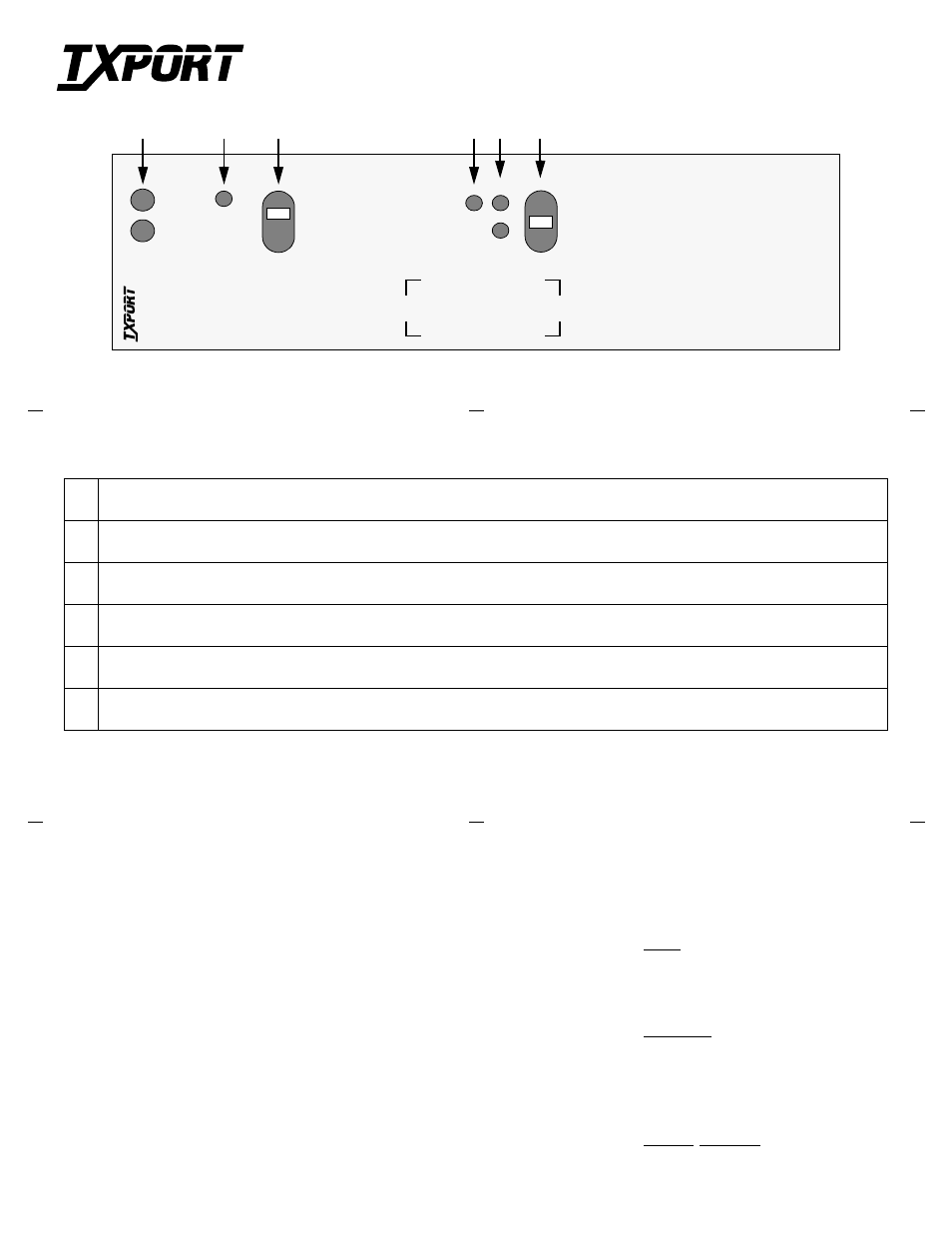Verilink 1060 Broadcast Card (CG) Configuration/Installation Guide User Manual
1060 broadcast card, Configuration guide, General

General
The TxPORT 1060 Broadcast card is used to
expand a single T1 input to 14 T1 inputs in the
case where bridging may not be possible or
practical. The part number for the 1060 card is
F-1060-100-111.
The inputs are redundant. They switch from
the primary port (A) to the secondary port (B)
on receipt of an alarm indication signal (AIS)
or on a loss of signal (LOS).
AIS occurs on the receipt of 8192 consecutive
ones. LOS occurs on the receipt of 175 consec-
utive zeros.
Installation
The 1060 card is designed to be installed in a
single unit housing module for stand- alone
desktop use or for wall mounting.
T
R
A
N
S
P
O
R
T
®
Specifications
Input (A /B): Impedance terminated 100 ¾ (± 2 %)
Unterminated 1000 ¾
Output:
Per 62411 waveform into 100 ¾
Power
DC Power:
-48 VDC (± 10%), 50 mA maximum
2.5 Watts, 8.5 BTU maximum
Connection: Terminal
block
Mechanical
Mounting:
desktop, wall, horizontal or vertical
rack, vertical nest mount
Dimensions:
1.72" W, 6.8" H, 10.5" D
Weight:
4.0 pounds
Industry Standards
FCC Compliance:
Part 15 Subpart B, Class A
FCC Part 68 Reg:
Front Panel Description
1
Status: The green LED lights when the unit is powered and operation is normal. The red LED lights if an alarm exceeding thresholds is
detected or for other unit failure.
2
ACO: This amber LED lights if the ‘alarm cut off’ switch is placed in the left ‘ON’ position. It indicates that the alarm relay contacts are
forced to the ‘No Alarms’ condition.
3
ACO SW: This ‘alarm cut off’ switch controls the alarm relay circuitry. If the switch is placed in the left ‘ON’ position, this circuitry is
deactivated. Note: The ACO indicator still functions as usual.
4
Forced: This amber LED lights to indicate that the ‘Force switch’ is in either the ‘
A
’ or ‘
B
’ direction.
5
A / B: Either the ‘
A
’ or ‘
B
’ green LED lights to indicate which input is being broadcast to the ports. Even if both Port A and Port B have
input, Port A will be selected and the ‘
A
’ indicator will light.
6
Force Switch: This switch is used to force the input to either the ‘
A
’ or ‘
B
’ input.
AC
O
S
W
AC
O
F
O
RCED
A
ST
A
T
U
S
10
60
Broadc
a
st
1060 Broadcast Card
Configuration Guide
Part Number 45- 00073
Rev 1.00
3
2
1
TRANSPORT
®
B
4
5
6
N
Operation
The card has 2 input choices -
A
or
B
. Normal
operation uses the ‘
A
’ input. The green LEDs
indicate which side is supplying the input.
The unit alarms on a loss of signal (LOS) or on
an alarm indication signal (AIS). If an alarm
occurs on the ‘
A
’ input, the unit switches to the
‘
B
’ input. When the alarm condition is absent
from the ‘
A
’ input for 60 seconds, then the ‘
A
’
input assumes control again.
The manual force switch is used to force the
input to either the ‘
A
’ side or the ‘
B
’ side. The
‘
FORCED
’ amber LED indicates that the force
switch is out of the normal ‘
N
’ position.
The unit has a ‘Bridge’ or ‘Term’ option on
both inputs. This means that more than one
input may be tied together with the last one ter-
minated.
